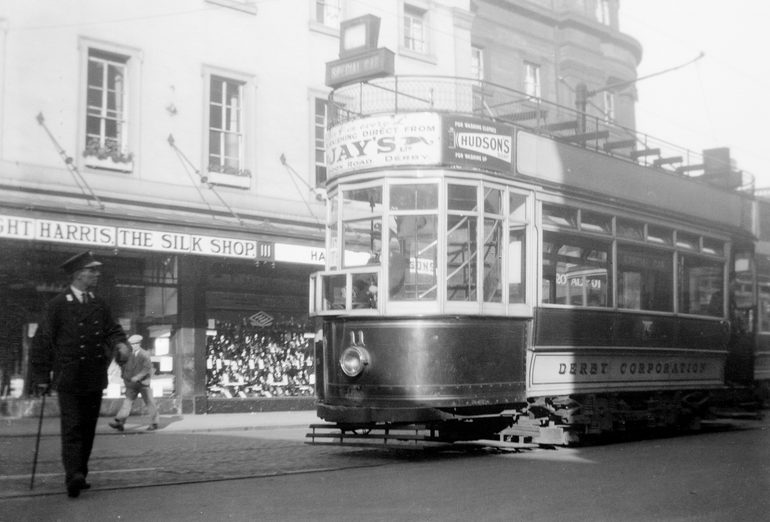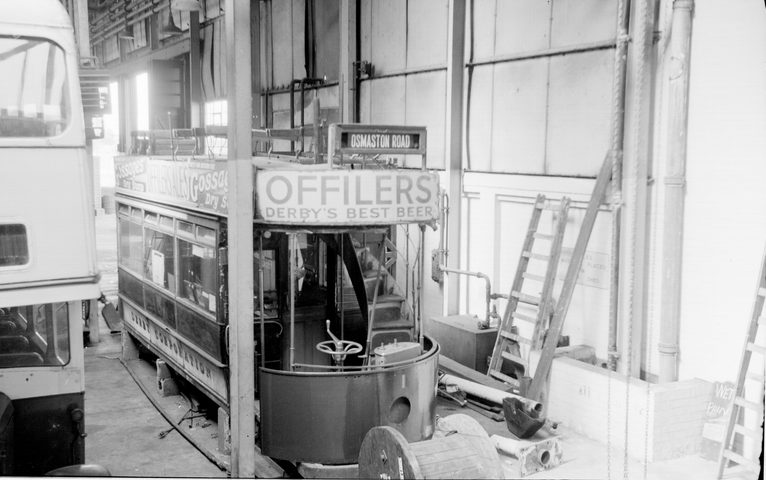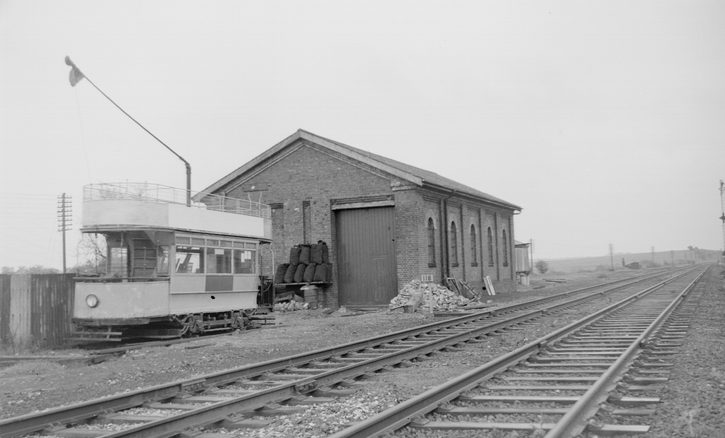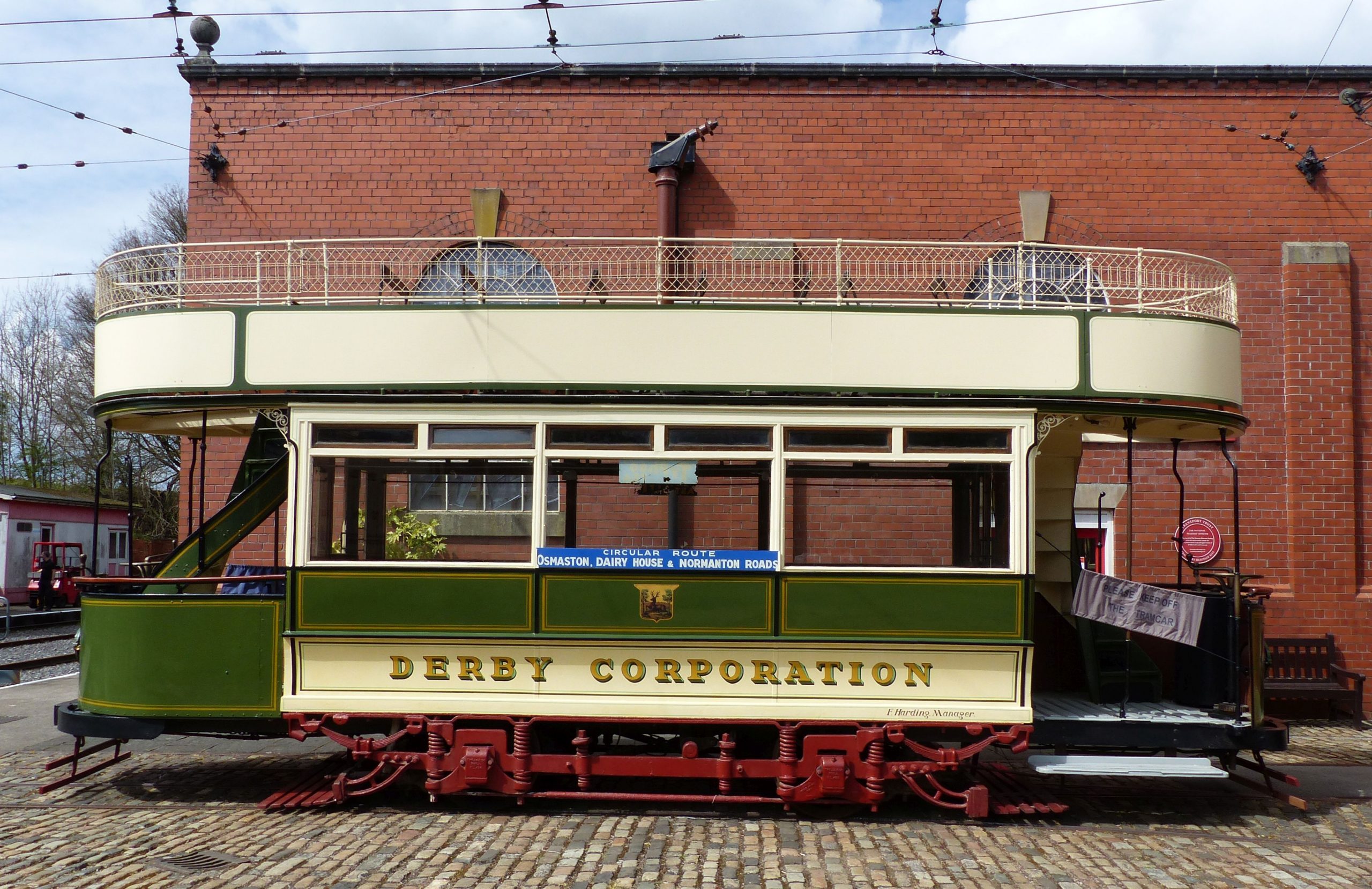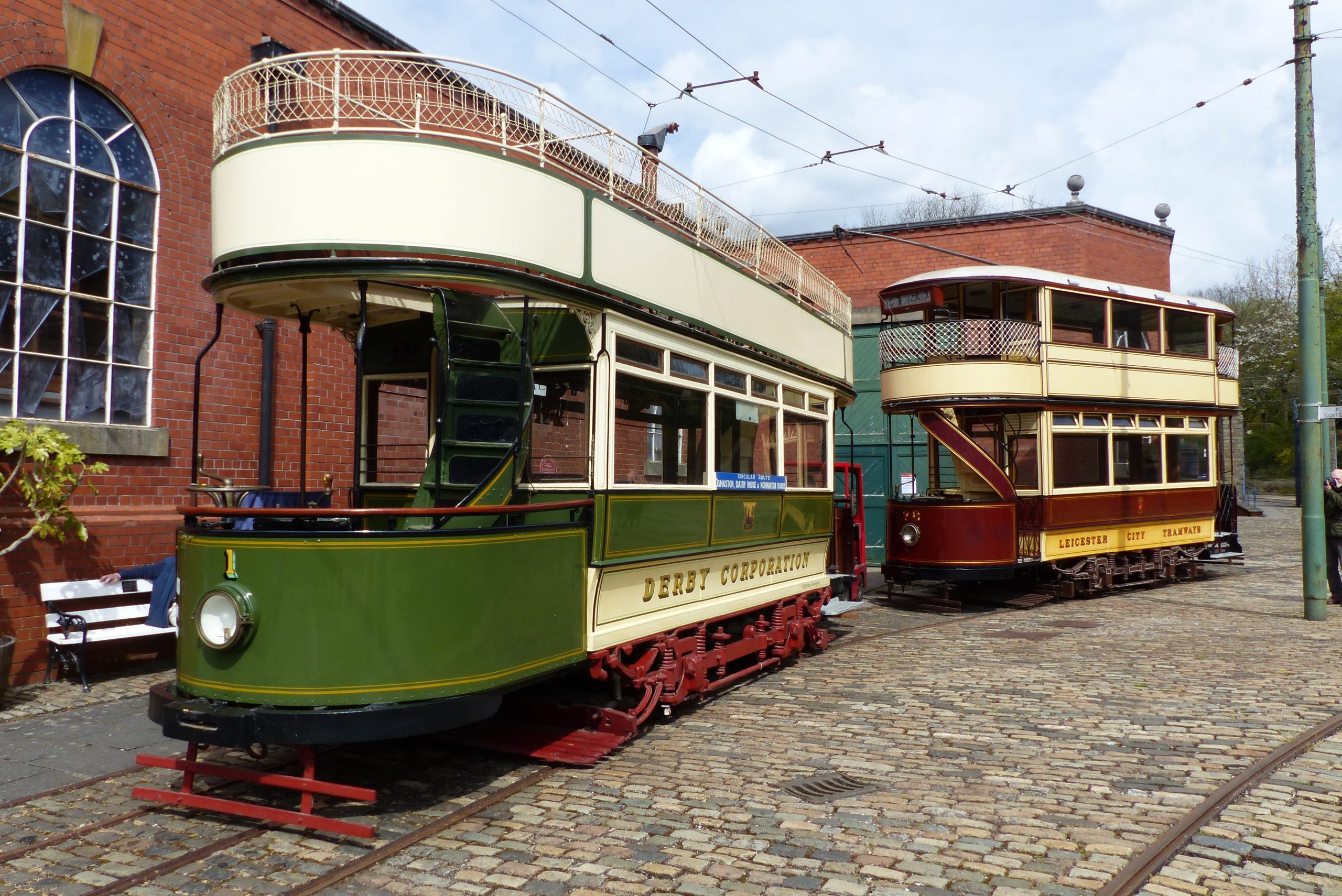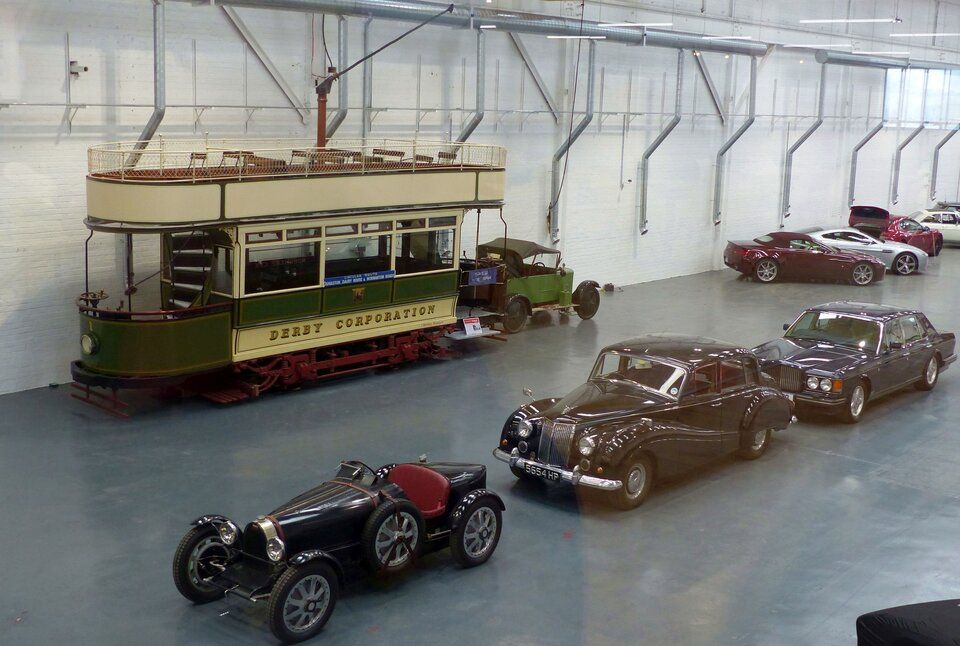Derby Corporation No. 1
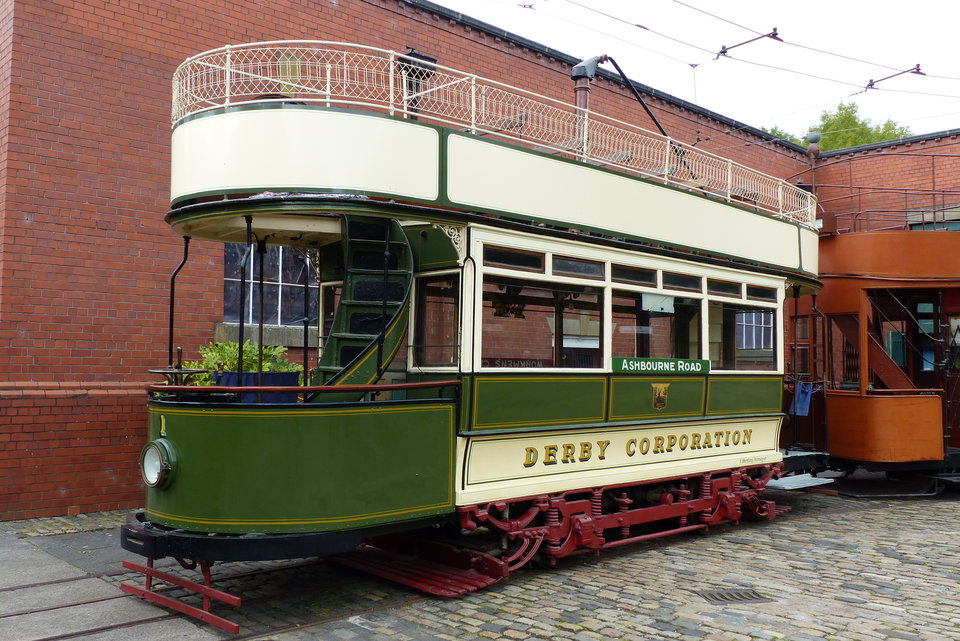
Photo: Jim Dignan
Derby 1 was built in 1903 at nearby Brush Electrical Engineering Co. Ltd., of Loughborough, just down the road from Derby itself. A horse tramway had existed in Derby since 1880 but, after taking it over in 1899, Derby Corporation set about improving and electrifying the four foot gauge network, which by 1908 had been extended to 14 miles in length.
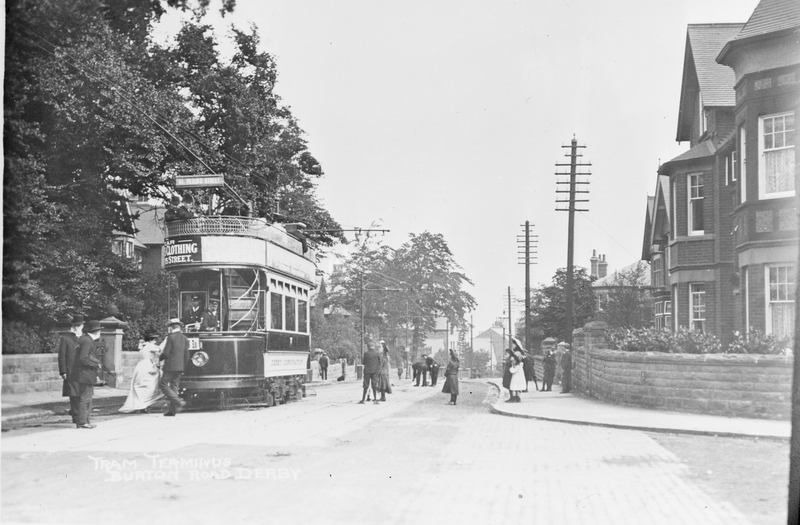
Derby 1 at Burton Road terminus. Photographer and date unknown.
Delivered to Abingdon Street depot in December 1903, it was first used as a crew training vehicle and to test the infrastructure before the formal opening of the system on 27 July 1904. The tram then continued in regular service until 1933, by which time a top cover and vestibules had been added in 1928.
A fascinating feature of these early tramcars was the installation of an electricity meter that not only showed the tramcar’s performance, in terms of the amount of electricity it took to power it, but also the performance of the driver. Current could be saved by ‘coasting’ the tramcar rather than continuing to draw electricity on flat and downhill stretches and, in order to encourage this, drivers were periodically paid a bonus (sometimes called “Juice Money”) according to how much power, and therefore money, had been saved. Not all operators installed them but Blackpool and Chesterfield, in addition to Derby, were among those that did.
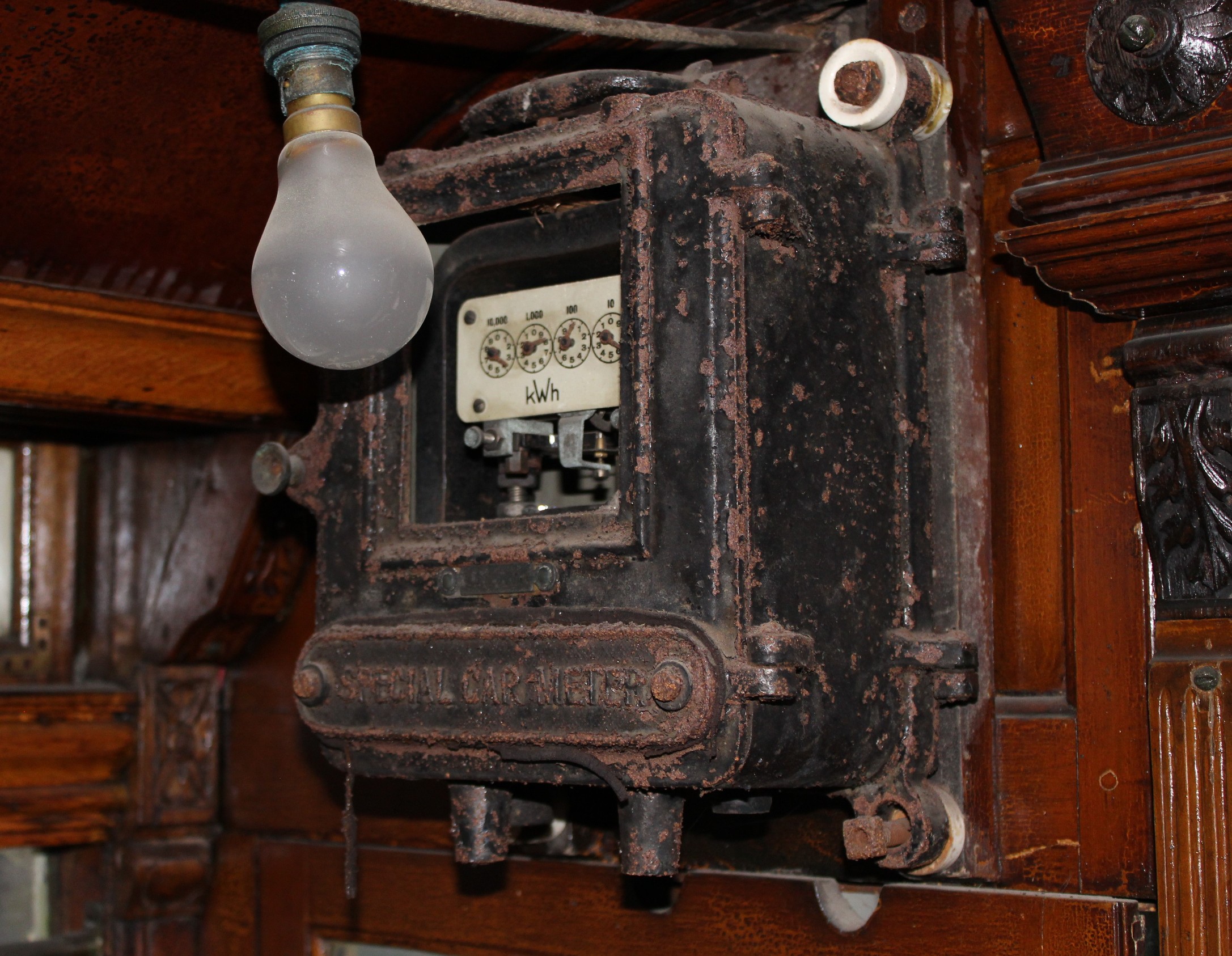
Derby 1’s electricity meter, which monitored the performance of both tramcar and driver! Photo: Paul Abell, 2/5/2021.
It spent the latter part of its life on the Nottingham Road and Kedleston Road routes and was recorded as having covered 660,390 miles by the time it was pensioned off in September 1933, ten months before the last Derby tram route was replaced by a trolleybus system.
Specification
- Type of tram
- Electric passenger tram – double deck; open top, unvestibuled
- Livery
- Olive green and cream
- Seating capacity
- 48 (26 on top deck; 22 downstairs)
- Date built
- 1903
- Date entered service
- 1904
- Manufacturer of body
- Brush Co.
- Manufacturer of truck
- Brush AA, replaced by Brill 21E; replaced during restoration by UEC 21E (Ex-Blackpool Gondola)
- Gauge
- 4' originally; re-gauged to 4’ 8½”during restoration
- Motor
- GE52 2 x 27 hp
- Controller
- General Electric K10
- Current collector
- Trolley (not fitted)
- Modification
1928 – top cover and platform vestibules fitted
- Withdrawn from service
01/09/33
- Subsequent history
Sold as summer house in 1933
- Restoration history
1962 – Restored by Derby Tramway Group
1970 – Acquired by TMS & put into storage
1991 – Moved to Crich and put on display after cosmetic repainting- Current status
- Cosmetically restored (some parts missing)
- Current location
- Off-site storage facility
- Future plans
Would need major rebuild to reach operational standard
- 1904 – 1933Fully operational
- 1933 – 1962Converted into dwelling
- 1962 – 1970Undergoing restoration
- 1970 – 1990In storage
- 1991 – 2021On display at Crich
- 2021 – 2023 In storage
- 2023 – On display at Derby’s “Great Northern Classics” centre, where it is on loan

